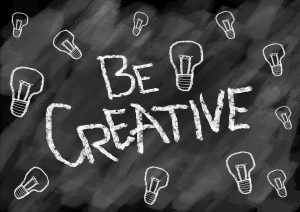8.2 Types of Thinking
Opportunity
 Thinking is one of those hard-to-pinpoint aspects of life we typically don’t analyze much—like breathing or walking or sleeping. We constantly think, and becoming more attuned to how we think and what we do when we encounter new ideas is an excellent habit to pursue.
Thinking is one of those hard-to-pinpoint aspects of life we typically don’t analyze much—like breathing or walking or sleeping. We constantly think, and becoming more attuned to how we think and what we do when we encounter new ideas is an excellent habit to pursue.
In this section, we will review three types of thinking we use every day: critical thinking, analytical thinking, and creative thinking.
Analytical Thinking
When we work through a problem by breaking it down into its component parts for separate analysis, we call that analytical thinking.
Characteristics of analytical thinking include:
- identifying the parts,
- researching options,
- verifying the validity of any sources you reference.
We use analytical thinking in our everyday lives when we brainstorm, budget, detect patterns, plan, compare, work puzzles, and make decisions based on multiple sources of information. Think of all the thinking that goes into the logistics of a applying to college—where to apply, what to programs to apply to, the reputation of the school, what fees and information will be required, what prerequisites are required to apply—when choices and decisions are rapid-fire, but we do it relatively successfully all the time.
In the example above, you are breaking down the process into component parts or separate elements of a situation or problem. If you don’t identify all parts of a problem, you run the risk of ignoring a critical element when you follow up on the solution.
Critical Thinking
Thinking critically includes some form of judgment that thinkers generate after carefully analyzing the perspectives, opinions, or experimental results present for a particular problem or situation. You use critical thinking every day when you choose what to wear to an interview vs what to wear to an 8 AM class. You used data (your understanding of how you may be perceived) to select, and you will validate your thinking if and when you do have a successful interview.
When you are reviewing your upcoming due dates you are constantly weighing options, consulting data, gathering opinions, making choices, and then evaluating those decisions about what to do first and how much time to spend on it, which is a general definition of critical thinking.
One component to keep in mind to guide your critical thinking is to determine the situation. What problem are you solving? When problems become complex and multifaceted, it is easy to be distracted by the simple parts that may not need as much thinking to resolve but also may not contribute as much to the ultimate problem resolution. What aspect of the situation truly needs your attention and your critical thinking?
Creative Thinking

It’s common to think of creativity as something used mostly by traditional artists—people who paint, draw, or sculpt. Indeed, artists are creative, but think of other fields in which people think just a little differently to approach situations in their discipline. Creative thinkers often seek out new ways to solve problems or identify a need that they want to fulfill. They are often entrepreneurs and “big idea” people.
You may not think you have a creative way to approach a situation, but if you were to bounce ideas off like-minded friends and also friends who would offer a completely different way of looking at something, you may discover that indeed you do have some good ideas ready to come to fruition. This creative brainstorming doesn’t just happen though. You need to set aside specific times to work with others to flesh out ideas and think through obstacles.
“7.2 Creative Thinking” & “7.3 Analytical Thinking” & “7.4 Critical Thinking” from College Success by Amy Baldwin & Open Stax is licensed under a Creative Commons Attribution License
When we work through a problem by breaking it down into its component parts for separate analysis.
Includes some form of judgment that thinkers generate after carefully analyzing the perspectives, opinions, or experimental results present for a particular problem or situation.
People who often seek out new ways to solve problems or identify a need that they want to fulfill; they are often entrepreneurs and "big idea" people.

